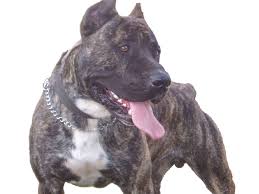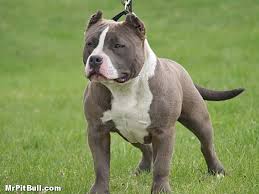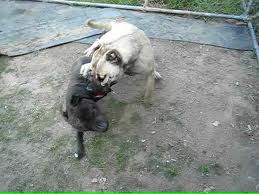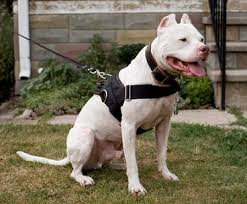How to tell which dog is dominant?
HOW TO TELL WHICH DOG IS DOMINANT
Dear Your Own Vet’s Animal Behaviorist,

My question is that I am trying to determine what dog is the Alpha dog out of my three dogs. I have a 2 year old Male Presa Canario (Mastiff), a 5 year old Male Pit Bull and a 10 year old female Pit-Bull mix that I am pretty sure is the Omega. But the two males that I have had since birth exhibit Alpha traits. My Presa is pushy, shoves the other dogs out of way and does not allow the other dogs any affection before him or maybe on somedays not at all. He is not food aggressive toward me or the female dog but will not let the male Pit-bull eat his food/and then takes ownership over the food. I must separate my male Presa or he will be very vicious towards my male Pit bull.
But yet he will clean the Pit Bull. Is this not a submissive behaviour? And during play he is much bigger than the Pit Bull so it’s like he does not want to get that aggressive in their play. It appears that when the Pit Bull starts to get mad or more aggressive in their play, my Presa will hold him down with his big paw and start licking him and the Presa also rolls on his back as though he is submitting.

My Pit Bull also appears to want to walk ahead of the Presa when walking. Outside play the Pit Bull is much more aggressive in play. I want to keep the order and not disrupt their pack system by not recognizing who is who. Can you shed a light?
Thank You,
Kelly

Dear Kelly,
Thank you for contacting me about your three dogs and their hierarchy.
Whenever I go to do a behavioural consultation, problems occur due to problems with hierarchy.
Although everyone talks about the “alpha male”, it is actually the female that keeps everyone in check. It is the female that will put the males into their place and they will respect her. When people push the female down in favour of a male or males, then a lot of problems can occur.
The female should be given everything first – greeting, praise, food, rewards etc. Male dogs accept this and it helps to keep the group in order.
Your biggest problem is between your two males – both strong breeds and with the genetic ability to fight. The Presa is coming up to two years which is the age of maturity. He will start to push for hierarchy in small ways at first, but very soon could have an all out fight with your Pitbull to gain control. You are going to have to watch very carefully to see if the Pitbull can keep the higher status between the two, or if you feel that the Presa now needs to become your number 2 dog. Just the size alone of the Presa and being younger could be the reason for swopping them over. You also say that the Presa is pushing the other dogs out of the way and won’t let them have affection – this is showing that he wants the higher status. Of course he can’t push the female out of the way, but he could get attention above the Pitbull. Make sure that you give the female the attention in front of him and that you don’t accept him pushing her out of the way.
Many dogs do clean each other. When they are in a calm state they can revert to affectionate behaviour, and grooming of each other is part of this behaviour. However it is not necessarily submissive behaviour, as I have seen high ranking dogs do it to lower ranking dogs. It can be a sign of “I can clean you as I am higher than you”.
Another big factor with the males, is whether they are neutered or not? Un-neutered males have all the extra testosterone in their body, and this will increase in times of tension. I personally believe in having all males neutered if they are not going to be mated (and even then, I leave breeding to breeders). Neutering does not make a male dog any less of a male. It gets rid of the testosterone rushes, and prevents prostate cancer in the long run. Male dogs also suffer when females come into season and they are now frustrated that they can’t mate. This can spark of fighting between two males.
It would certainly help to a degree to have both males neutered, but of course hierarchy is still going to be important.
Food of course is a huge catalyst for fighting. I would separate all three at feeding times and put the food down in a specific order – always the female first. If you decide to make the Presa number two, then his bowl would go down second and then the Pitbull third. Obviously if they are in separate areas, then you would just walk to give the food in the hierarchy order.
Everything that you have described between the two males is showing me that they are trying to work out their hierarchy between each other – the Presa holds the Pitbull down with his paw, but also rolls over; and the Pitbull wants to be ahead when walking (in fact it should be the female ahead). I would also do some individual walking with each dog just to reinforce how you would like them to walk, and then put them back together.

I am not sure if you have done any training with these dogs, but I would suggest that you do some classes with the males. This will show them that in fact you are the highest in rank and they need to listen to you when you tell them to do something.
I also believe in stimulating a dog’s brain. Maybe some agility for the Pitbull? Even the Presa, depending on his size – but I do have a Newfoundland that does agility at my dog school, so I’m sure that the Presa might enjoy doing some agility. I know that you take them on a walk, but perhaps a run would be better – really get their energy out.
Dogs who are stimulated are less likely to get into a fight. However, it is usually a catalyst that will cause a fight. Dogs can live together for many years and then something can set off a fight and they cannot live together again. It is sad, but it happens. Let’s hope that you can get your hierarchy correct to avoid any problems.
I hope this helps.
Regards,
Kathy Clayton
Behaviorist
Your Own Vet
https://yourownvet.com
Chairman of the Animal Behaviour Consultants of SA
Chairman of Dancing with Dogs in Africa
Senior Accredited Animal Behaviour Consultant (ABC of SA)
Practice No: SAABC/1998/008/C/F
Professional Dog Trainer and owner of K C Dog School
BA (UNISA) HDE (Johannesburg College of Education)
Qualified KUSA Judge in Obedience, Agility, Dog Jumping, Dog Carting
International judge for World Canine Freestyle Organization
kcdogs@global.co.za
www.kcdogschool.co.za
http://www.kcdogs.stemtechbiz.com
011 783 3042 082 454 1750

Leave a Reply
You must be logged in to post a comment.